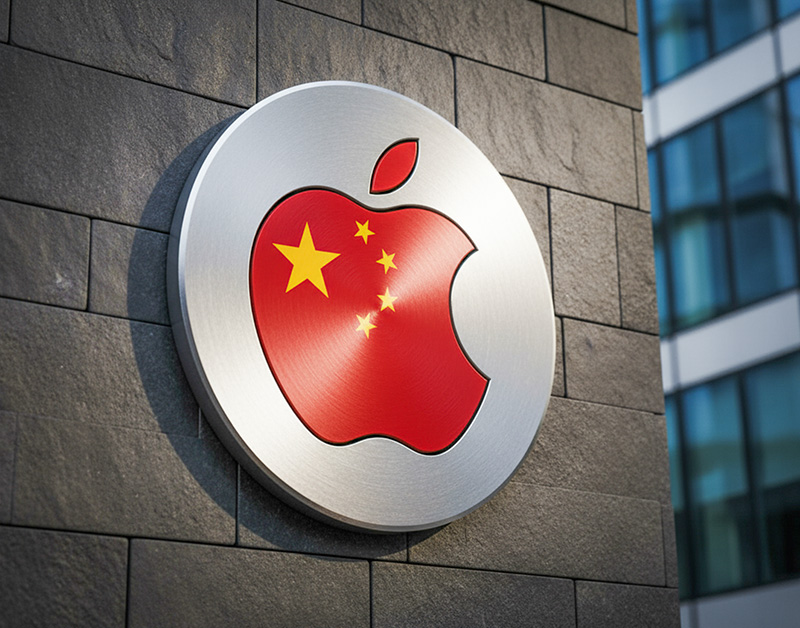Apple’s Orchard: the iPhone 6 and Apple Watch
Apple finally gets it mojo back with the introduction of a Watch and improved iPhone

Congratulations, Apple. It would seem you’ve finally gotten your mojo back. After a few years of “meh” launches, with incremental improvements and under-the-surface tweaks — not to mention the misstep that was the plastic iPhone 5C — the house that Steve Jobs built has returned in fighting form with products guaranteed to help slow down the ever-increasing march of Android competition. Apple launched three new hardware products, a digital payments service and told us when we can expect to update our devices to the latest version of iOS. It was a dense couple of hours at the keynote and we’ve got your full summary of everything Cupertino had to offer below.
Let’s get the most important thing out of the way first. The iPhone has finally entered the big leagues — literally. After months of speculation and admissions from Apple executives that the company was woefully ill-equipped to rival the glut of large-screened competitors, the iPhone has been stretched, buffed, and divided into two new models. Enter, please, the iPhone 6 and the iPhone 6 Plus. The former device jumps from a tiny 4-inch screen to a more acceptable 4.7-inches, while the Plus model takes things even further, increasing the screen to 5.5-inches — directly rivalling the largest Android flagships.
The display on both is vastly superior to the Retina display on the iPhone 5S. That sub-HD screen, a triumph of marketing over actual quality, has been ditched in favor of Retina HD. For the smaller screen, resolution bumps up to 1334 x 750, which puts it above the 720p requirement to be considered high-definition. The Plus, though, goes bigger, hitting Full HD resolution — or 1920 x 1080 — which should give iPhone fans a much denser, richer viewing experience, particularly when watching videos, something that will be vastly improved on that large display. Of course, Android smartphones have already moved onto Quad HD screens, which offer 2560 x 1440 displays, but Apple can’t be expected to keep up with the breakneck pace of Android hardware development given its yearly refresh cycle. That being said, the display on both iPhones comes with better color reproduction, wider viewing angles and ion-strengthened glass, so you shouldn’t be left wanting.

The overall design of both is notably different to the 5S. It’s still very much an iPhone, but Apple has taken design cues from its large-screened rivals. The power button moves from the top to the right hand side, while power, mute and volume buttons are all slim — aping Nokia’s preferred button design — a result of some serious weight loss. The iPhone 6 is a mere 6.9mm thick, with the Plus a little thicker at 7.1mm (that’s 0.27/0.28 inches respectively. Both devices have lost Apple’s square-edged design, again opting for a design borrowed from competitors, with soft, rounded corners. The screen bleeds straight into the aluminum with its chamfered edges and the metal wraps around the back, broken only by strips required to let mobile and WiFi signals escape the body. Again, Nokia is a good reference here for Apple’s design influences, with the company’s Lumia 925 featuring similarly-shaped aluminum sides.
Apple has beefed up the iPhone’s internals, with a meatier A8 chip that’s more powerful and yet also more efficient, as well as a better GPU — which will take advantage of Apple’s new Metal technology to create more impressive games to play while you’re sitting on the train. Battery life, a sore point for many iPhone users, is claimed at up to 50 hours of music, 11 hours of browsing via WiFi and 14 hours of talk. They increase to 80 hours, 12 hours and 24 hours respectively for the Plus model. Apple’s coprocessor has been updated, this time called the M8, and features an improved gyroscope and a barometer, to better track your activities during exercise or aid stability when taking panoramas, for example. Other improvements include even more LTE bands, which should help those who frequently travel, and higher LTE download speeds to take advantage of faster networks when carriers roll them out.
The iPhone’s cameras, two of the most-used features of the device, have been overhauled. Resolution stays at 8MP, but there’s a new image processor on board and new tech to make every photo better. Focus Pixels, borrowed from DSLRs, improves autofocus, face detection and exposure control. Video has been improved further, too, shooting up to 1080p footage at 60fps, or slow-motion video at up to 240fps at 720p. That’s twice as slow as the 5S, which should make for even more incredible slow-mo videos littering your newsfeed. What’s more, if you get the Plus, those photos and videos will be optically stabilized like Nokia’s cameras and some Android competitors, vastly improving video capture and shots in low light. Why Apple left it out of the smaller model is a mystery, though it may have been to justify the price difference between the two.
Both models go up for pre-order September 12, with availability at retail expected a week later on September 19. The iPhone 6 will retail for $199 on contract for 16GB, increasing in $100 increments for 64 or 128GB of storage. The larger Plus also carries a large pricetag, starting at $299 on contract and maxing out at $499 for the 128GB version. For those looking for a cheaper iPhone, the plastic 5C is now free on contract, while the 5S will drop down to $99 on contract.

Apple wasn’t done there, though. The iPhone 6 and 6 Plus come with Near Field Communication, or NFC, which Windows Phone and Android devices have had for a while now. Apple has criticized the technology in the past, but it’s now featured in the iPhone. Why? Because Apple’s Passbook app just became a whole lot more useful.
The holy grail of mobile devices is in having them completely replace your wallet or purse. Google has been trying for a while to kickstart mobile payments with its Wallet app, which uses NFC to allow users to tap their device against a terminal in a store to pay. It works, and works well, but its adoption has been limited. Industry professionals generally agreed that it would take Apple and its clout in the mobile space to make mobile payments a thing, and now they have. Apple Pay will let you use your iPhone 6 and 6 Plus to pay for transactions without using your card.
Go into one of 220,000 places that accept contactless payments, including Bloomingdale’s, Macy’s, Subway, Whole Foods and McDonald’s, and you’ll hold the part of your iPhone with the NFC sensor near the contactless sensor. The payment will register, and users simply touch the iPhone’s fingerprint sensor to accept the charge. Apple Pay uses the card linked to the user’s iTunes account, but the retailer is never given your actual card number. Instead, Apple Pay generates a random payment number and uses a dynamic security code — replacing the three-digit code on the back of your card — to complete the payment. No information is stored by Apple or the retailer, and Apple promise that they can’t track what you bought or where. At launch, Mastercard, Visa and AmEx are backing Apple Pay, as well as many of America’s largest banks, including Wells Fargo, Chase and Bank of America. It drops as a free update to iOS 8, which launches September 17, by the way — in October. If it’s as easy as Apple promise, a wallet-free future may soon be with us.
For the first time in years, Apple used their infamous statement “one more thing,” and delivered something truly worthy of the excitement it generated. After years of speculation, concept renders, leaked information and hushed secrecy, Apple is finally entering the smartwatch market. You will soon be apple to wrap the imaginatively named Apple Watch round your wrist. Google has Android Wear, which runs on a variety of devices and focuses on quick interaction, Samsung has a kitchen sink approach where they cram as much as physically possibly into a device, while other manufacturers focus on fitness bands or e-ink products like the Pebble. Apple is attempting to offer an all-in-one, something they hope will come to define and lead the smartwatch category.

First things first, we have to address arguably the most controversial aspect of the Apple Watch: its design. Now, there will be many who think it’s the most beautiful thing in the world and utterly magical and revolutionary, but similarly, there are a lot of people complaining that it’s, well, dull. This writer is in that latter camp. In the face of the gorgeous Motorola Moto 360, the roundish, squarish, blobish Watch doesn’t really cut it. It’s inoffensive, and comes with a variety of metal, fabric, leather and rubber straps, but it’s not going to win any design awards. What it does have going for it, though, is choice, coming in three versions: the standard Watch, which is stainless steel in either chrome or black, the Watch Sport, which is aluminum in silver or space gray, and the Watch Edition, available in 18-karat gold or rose gold. There are two sizes, also, with the Watch available in 38 or 42 mm heights. As with all Apple products, it will be impeccably made. On top of that, Apple offers a vast array of watch faces and ways to customize the homescreen, ensuring no two watches look alike.
As for the actual Watch? Well, rather surprisingly, Apple are taking a Samsung-lite approach,, cramming a heck of a lot into their Watch. Starting on the outside, there’s a flexible, sapphire coated screen (though it’s only ion-strengthened glass on the Sport) that can recognize different levels of touch and offers haptic feedback. On the side, you’ll find Apple’s “Digital Crown,” a dial used in conjunction with touch to interact with the device. Turn it to adjust figures, scroll through lists or zoom in and out, for example. Press it to activate Siri, who will operate much as she does on your phone, letting you dictate messages or check your calendar.
Of course, it’s in the software that Apple is really maximizing what we can get out of our smartwatches. Where Android Wear takes a relatively pared down approach, focusing on notifications and minor interactions, iOS on the Apple Watch is pretty full featured. There is a custom designed interface, with app icons suspended in colorful bubbles, that can be zoomed in on to select your desired function. Glances is Apple’s answer to Android Wear’s notifications, activated by swiping up on the homescreen to see a list of recent notifications. All of your Apple favorites are here, including Maps, which offers turn-by-turn directions on your wrist, Calendar, a remote for Apple TV and iTunes, Music controls, a remote camera that syncs with your iPhone and lets you snap a photo without being next to your phone, a photos app (though we can’t see the appeal of viewing images on such a small display) and much more.
Apple’s renewed focus on health in iOS 8 is reflected in the Watch, which can effectively replace many fitness tracking bands. Apple claims it will track a user throughout the day and learn their routine and fitness, advising when they’ve been sitting down for too long, monitoring calories burned or offering encouragement and updates during workouts. It’ll tell you how close you are to your goals, let you review your workout session and can use the GPS in your iPhone to monitor a run, hike or cycling, for example. It’ll even let you unlock achievements to incentivize your fitness. Apple has even included a heart rate monitor on the Watch to further monitor your overall health. Should you be so inclined, you can even share that heart rate with other Apple Watch users, though you could also draw quick, neon images or share a range of interactive emojis, too — a cute addition that only Watch users can enjoy. On top of all of that, Apple’s Pay mobile payment system is onboard. Just hold your wrist next to a contactless payment terminal and you can buy your groceries without having to get your phone out.
Just like the iPhone, the Watch will only get better once developers start making apps for it. Starwood Hotels want you to unlock your hotel room with your watch, while American Airlines will throw your boarding pass on there (though this is something other smartwatches can also do). BMW is developing an app to let you know how much charge is left in your electric car, while various home automation companies are developing apps to let you control your home from your wrist. The possibilities are seemingly endless, given how thorough the software core of Apple’s Watch would appear to be. Of course, there are unanswered questions, such as whether there will be waterproofing (it would be crazy if there weren’t) and what the battery life will be, but we’ll learn more in the coming months as the Watch won’t launch until the start of 2015. When it does, it’ll start at $350, but you didn’t really expect an Apple device to be cheap, did you?
Support Metro Weekly’s Journalism
These are challenging times for news organizations. And yet it’s crucial we stay active and provide vital resources and information to both our local readers and the world. So won’t you please take a moment and consider supporting Metro Weekly with a membership? For as little as $5 a month, you can help ensure Metro Weekly magazine and MetroWeekly.com remain free, viable resources as we provide the best, most diverse, culturally-resonant LGBTQ coverage in both the D.C. region and around the world. Memberships come with exclusive perks and discounts, your own personal digital delivery of each week’s magazine (and an archive), access to our Member's Lounge when it launches this fall, and exclusive members-only items like Metro Weekly Membership Mugs and Tote Bags! Check out all our membership levels here and please join us today!
























You must be logged in to post a comment.